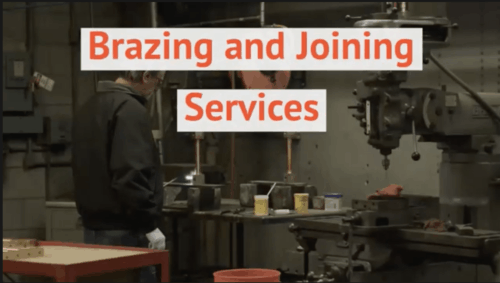Vacuum Aluminum Brazing
Vacuum Aluminum Brazing is a precise and clean joining process used to bond aluminum components in a vacuum environment. This method ensures strong, leak-proof joints without oxidation, making it ideal for applications that demand high-quality, reliable performance. Commonly used in the aerospace, automotive, and electronics industries, Vacuum Aluminum Brazing is essential for heat exchangers, radiators, and other critical components where durability and thermal efficiency are paramount. Our expertise ensures exceptional results, meeting the most stringent industry standards.
Vacuum Braze
Vacuum Brazing is a metal joining technique where the parts, including ETP copper, are joined together in a high temperature vacuum environment. The vacuum used in this process acts as the flux or cleaning agent for the parts, helping to remove oxides and facilitate brazing. The two types of Vacuum Braze are Partial Pressure and Hard (Full) vacuum, both utilizing alloys very similar to the ones used in hydrogen brazing.
Hydrogen Braze
Hydrogen Brazing is a metal joining technique where the materials (typically ceramic, steel, stainless steel or oxygen-free copper) are joined together in a high temperature hydrogen environment. The braze filler material (braze alloy) is usually a combination of copper, nickel, and precious metals such as gold or silver. Hydrogen Brazing often acts as a cleaning agent by removing oxides, leaving most materials very bright and shiny.
Partial Pressure Braze
Partial Pressure Vacuum Brazing is very similar to vacuum brazing. We pull a full vacuum on the parts and furnace, and then introduce a gas (usually hydrogen, argon or nitrogen) to reduce the vacuum.
Partial Pressure Vacuum Brazing, especially when the additional gas is hydrogen, is a better environment for copper, brass, silver, and nickel. It is also an ideal environment for Mu Metal.
Torch Braze
Torch brazing, also known as “silver soldering”, is an effective way to braze parts where a localized heating zone is required. Soldering and brazing with a torch is accomplished by fluxing the areas to be joined, then applying the alloy. The alloy often has tin or zinc in it to reduce the melting temperature.
Low Temp. Soft Solder
Low Temperature Soft Solder, usually under 400F, is a useful way to join metal parts. Soldering with a torch is accomplished by fluxing the areas to be joined, followed by applying the alloy. The alloy often contains tin or zinc to reduce the melting temperature.
Top


